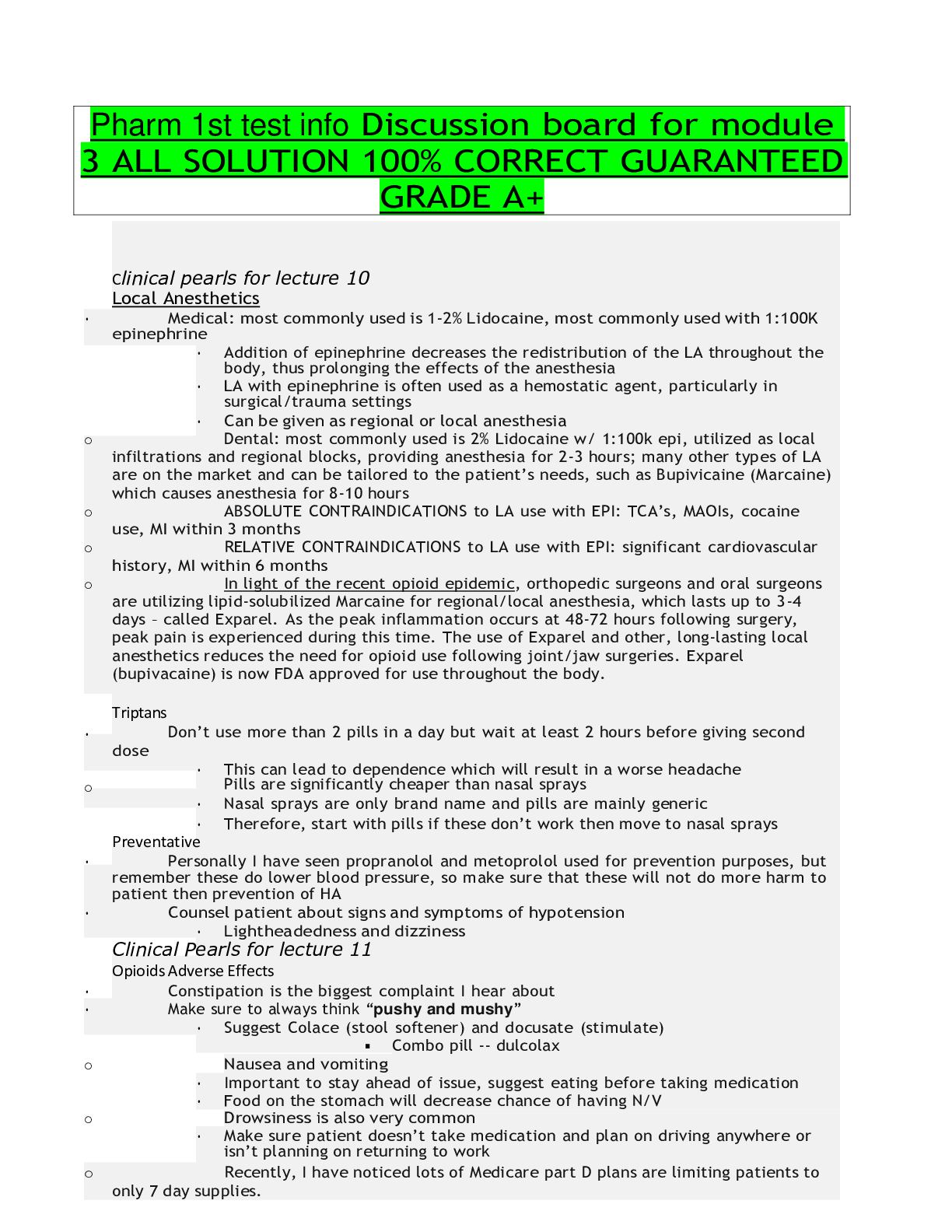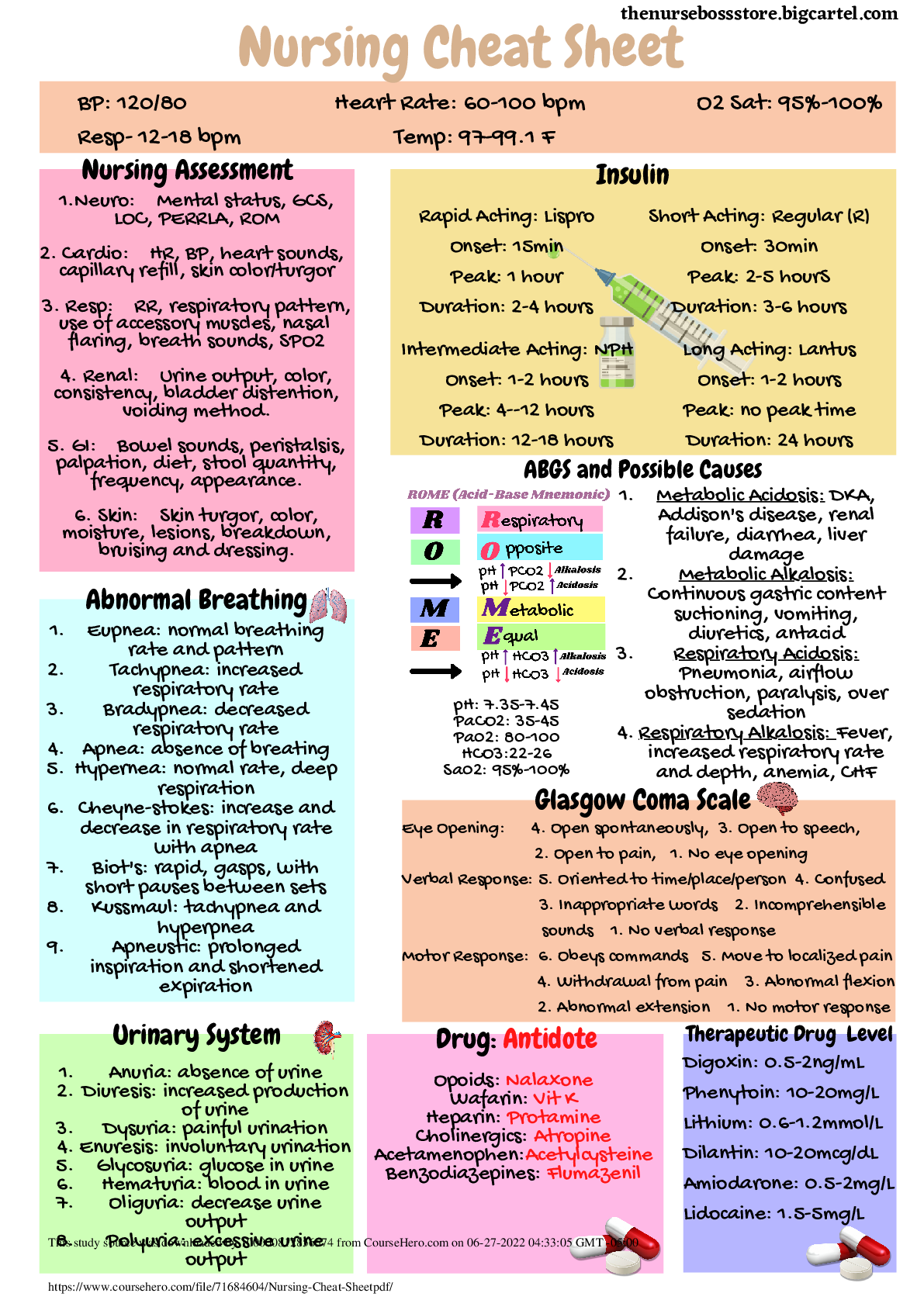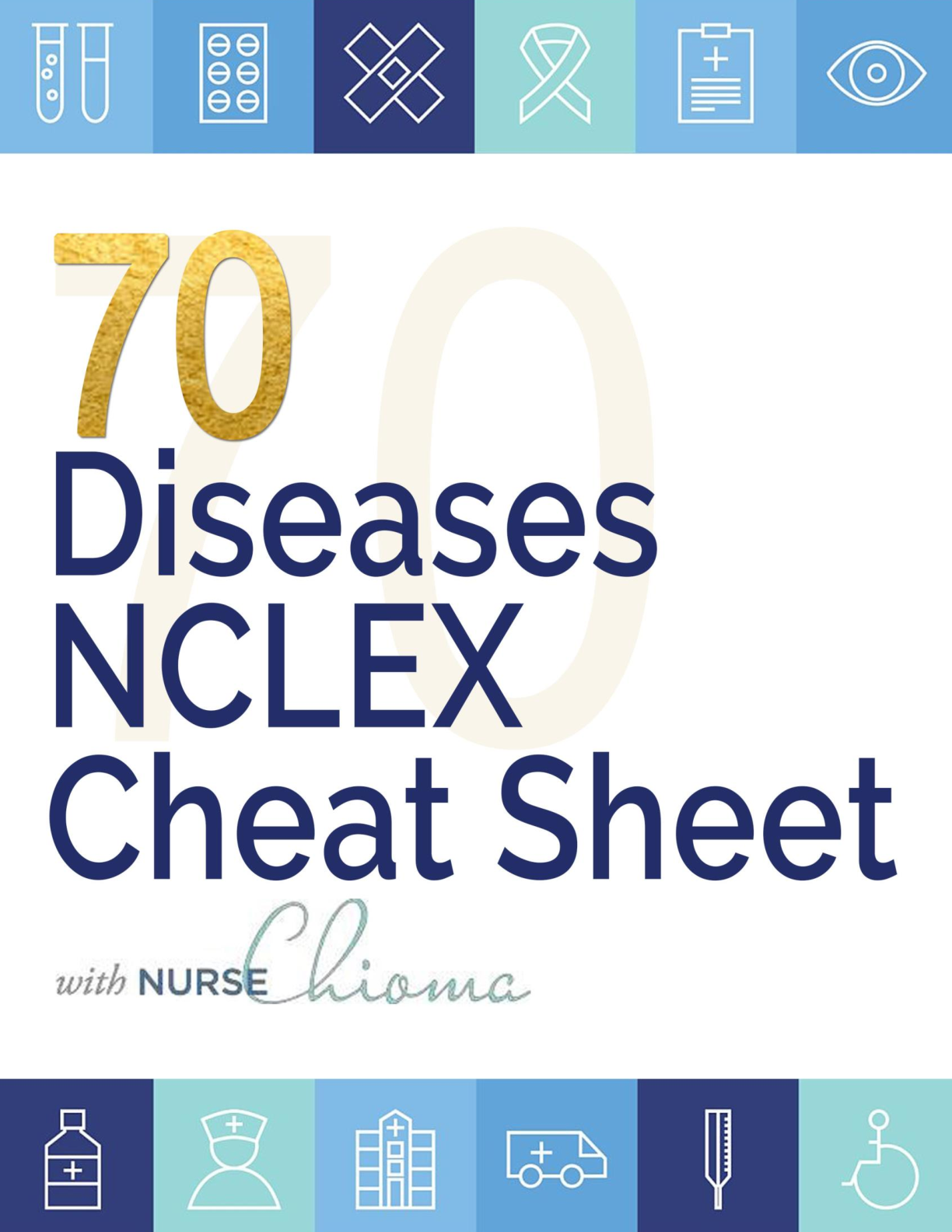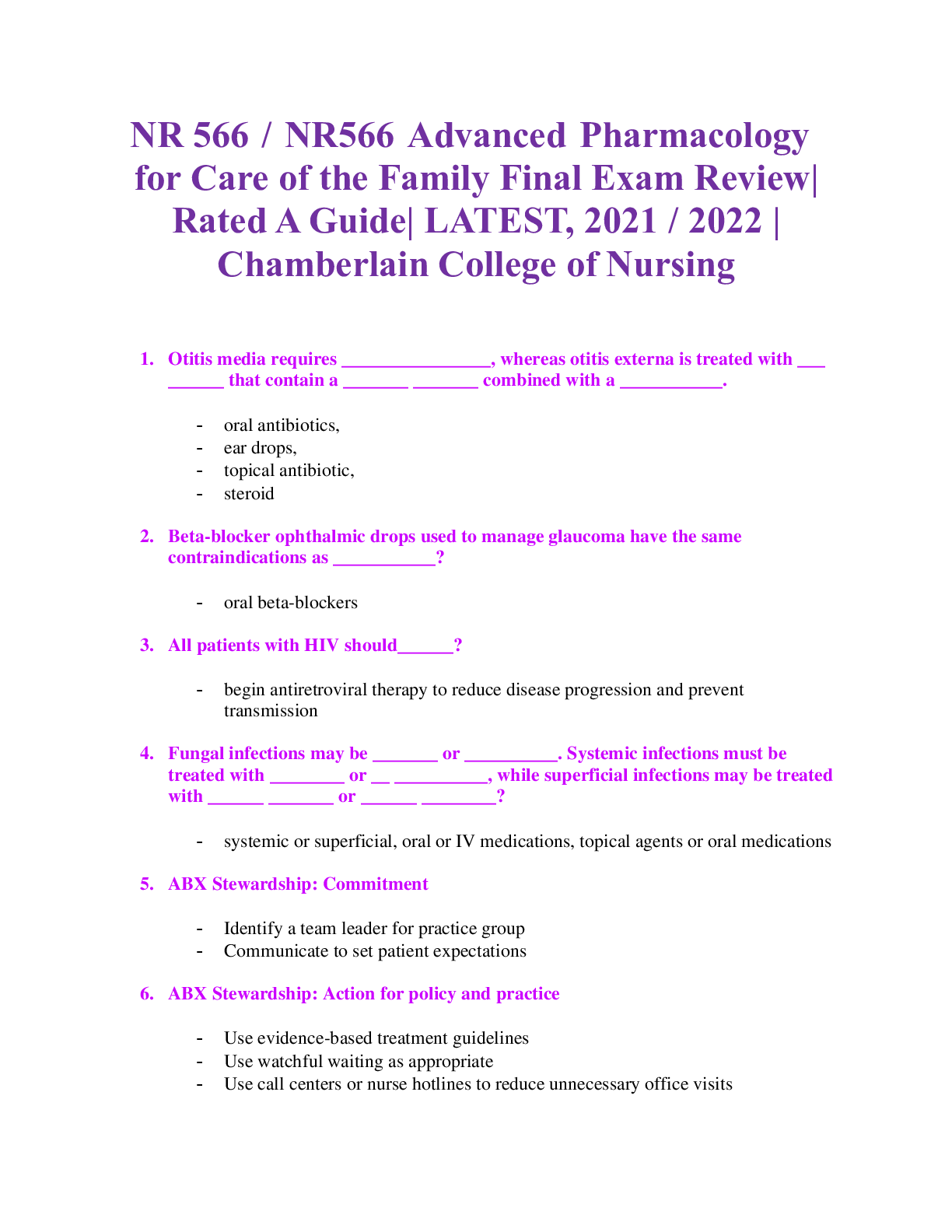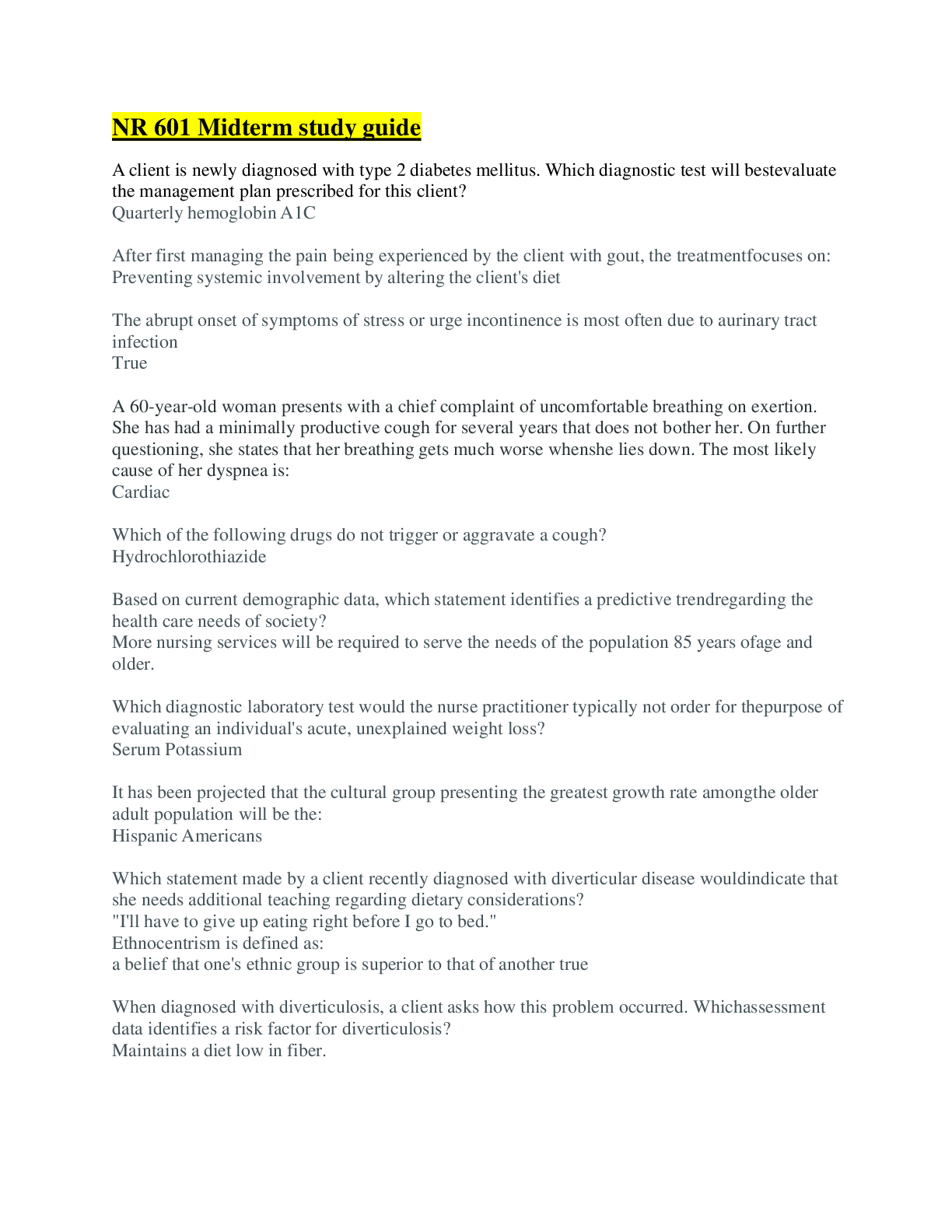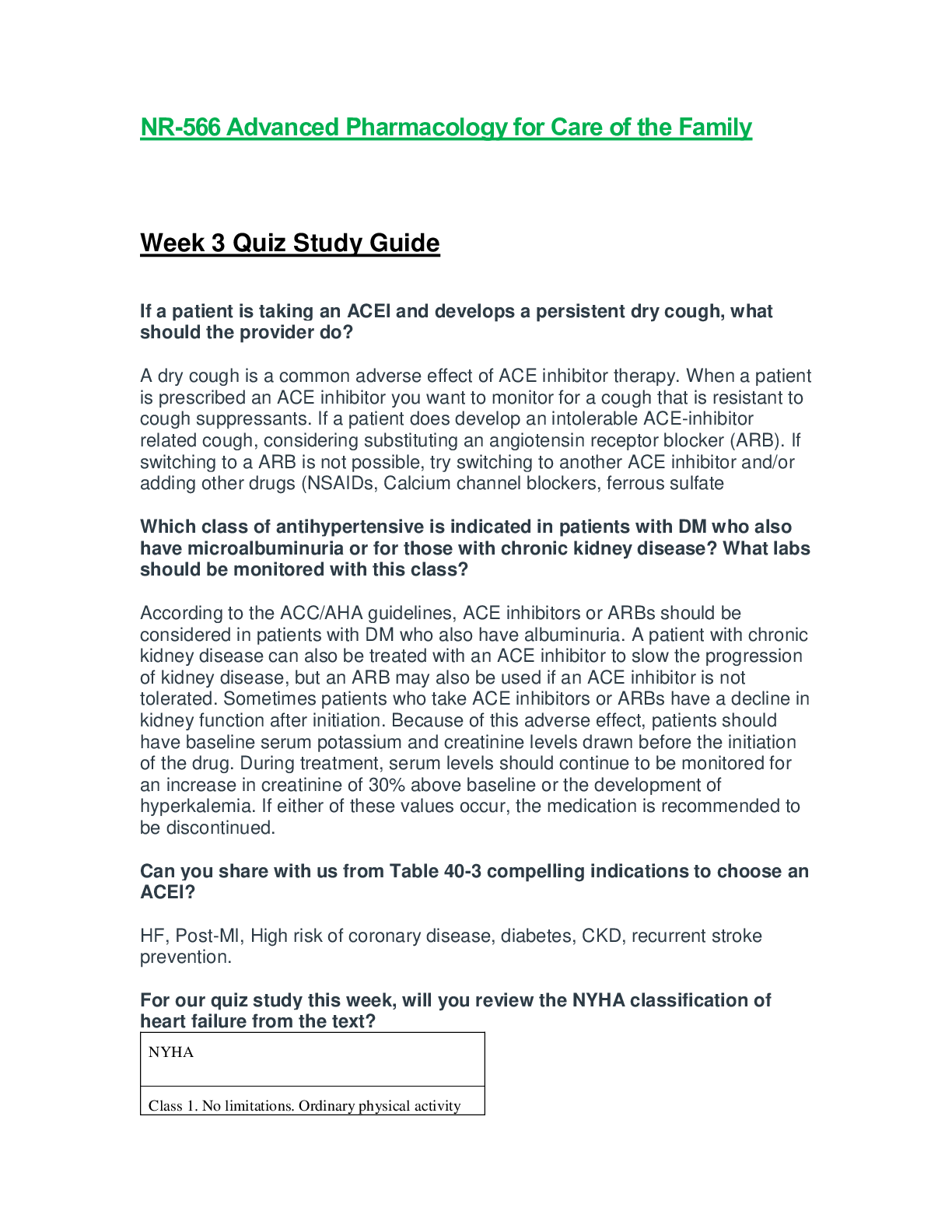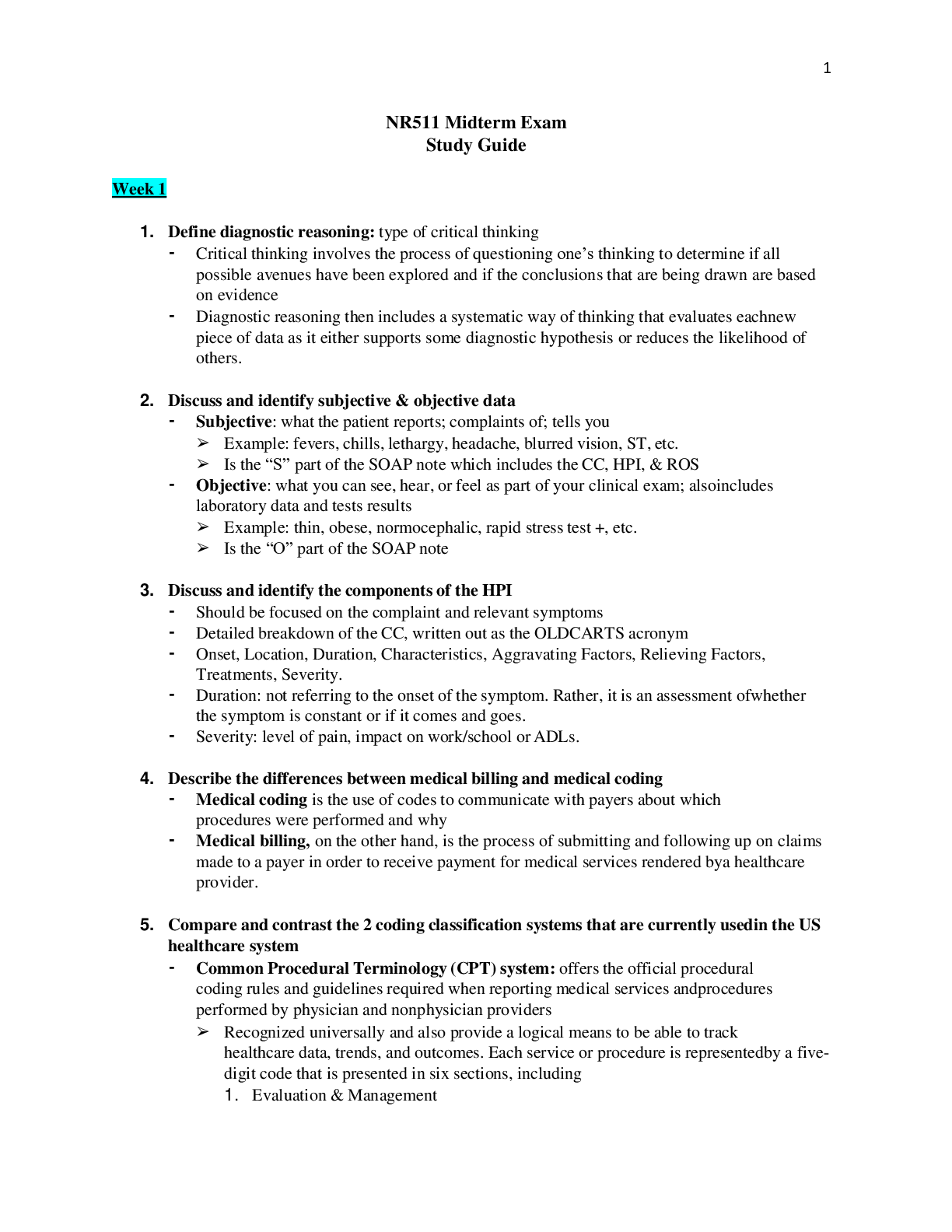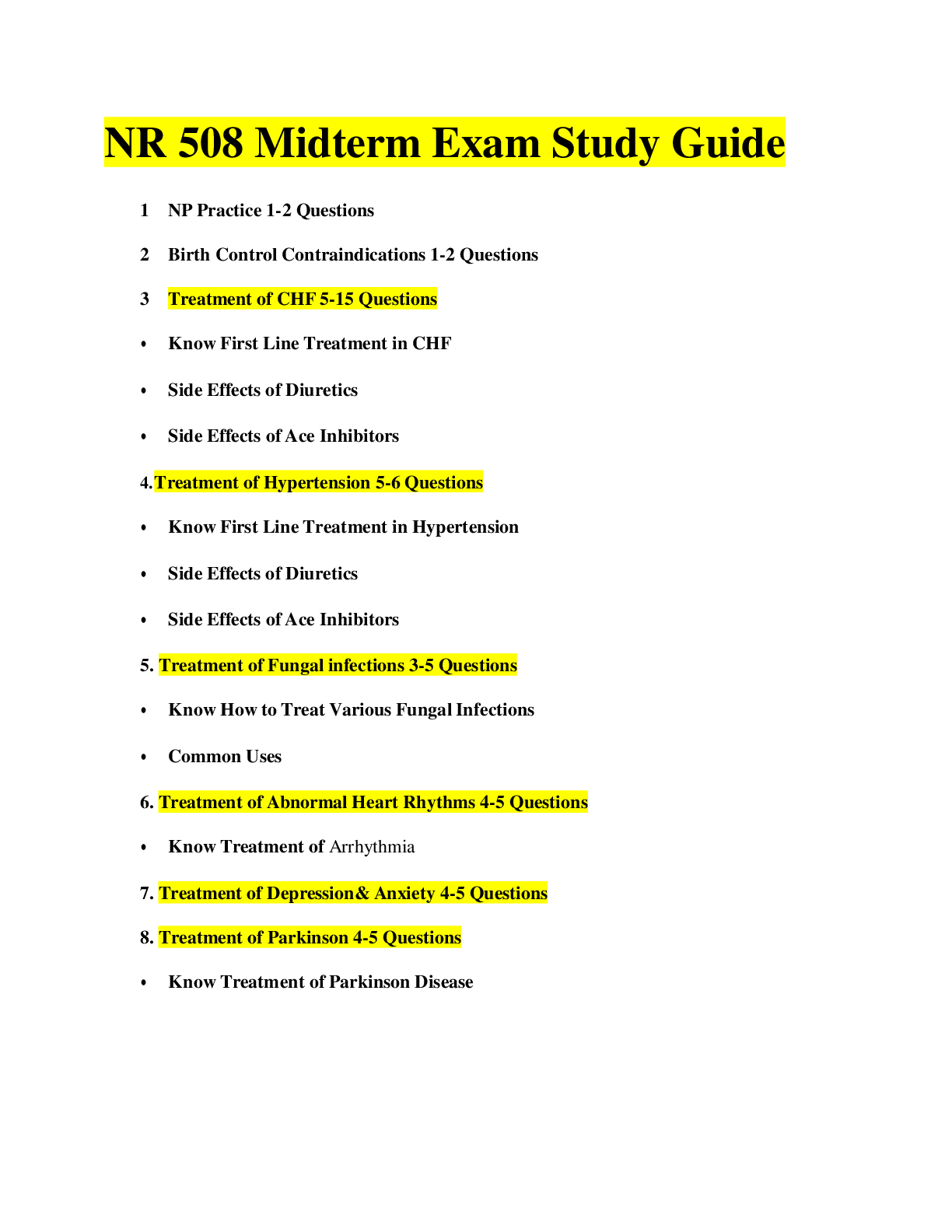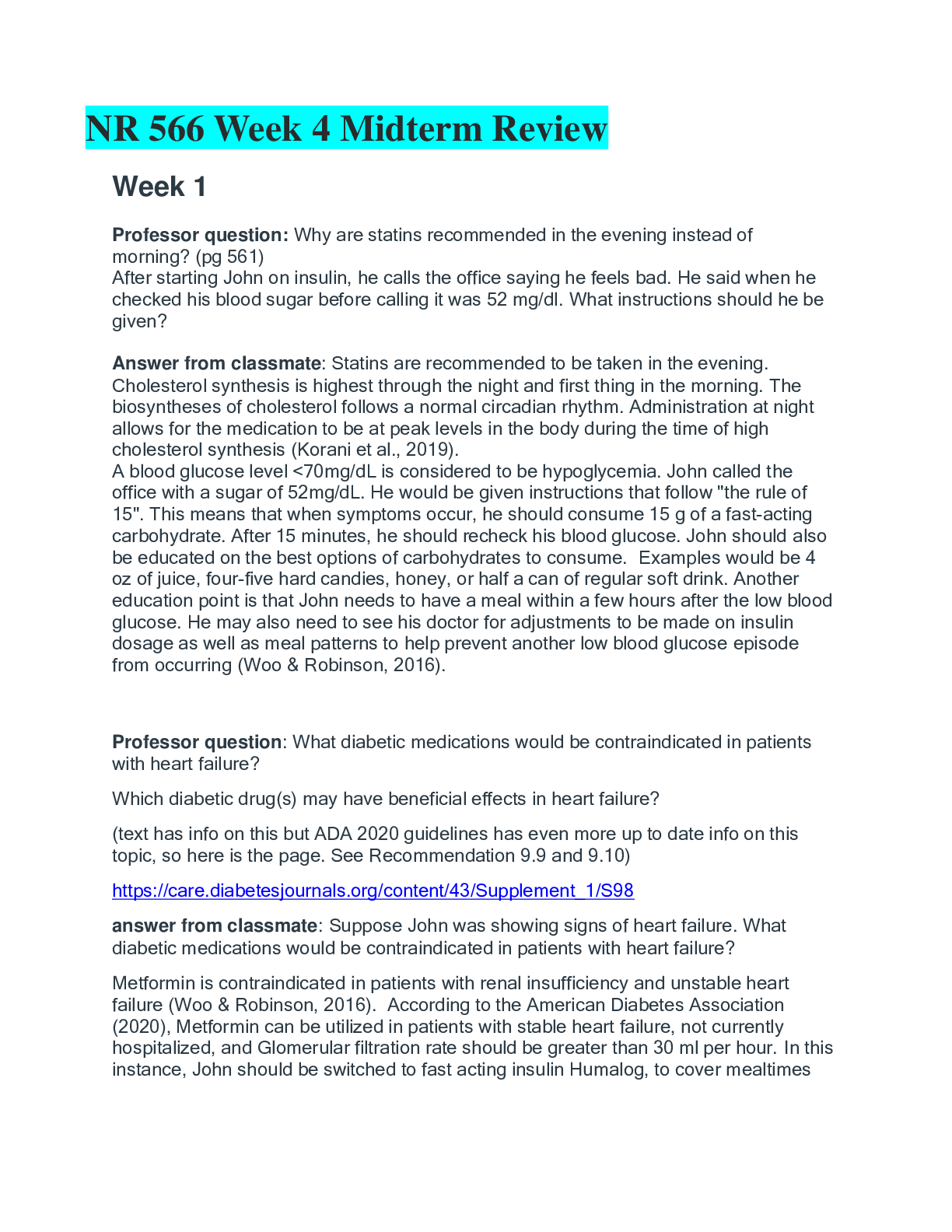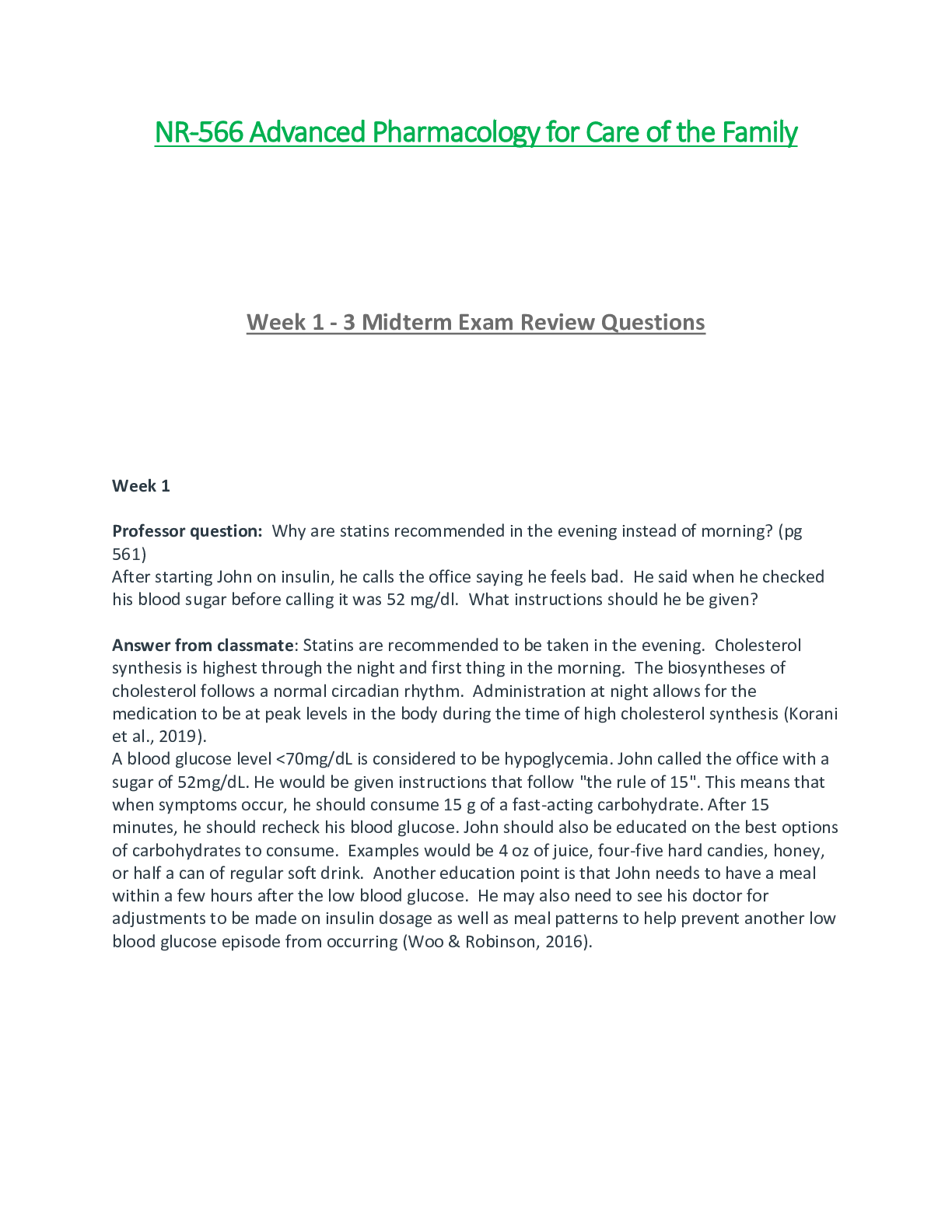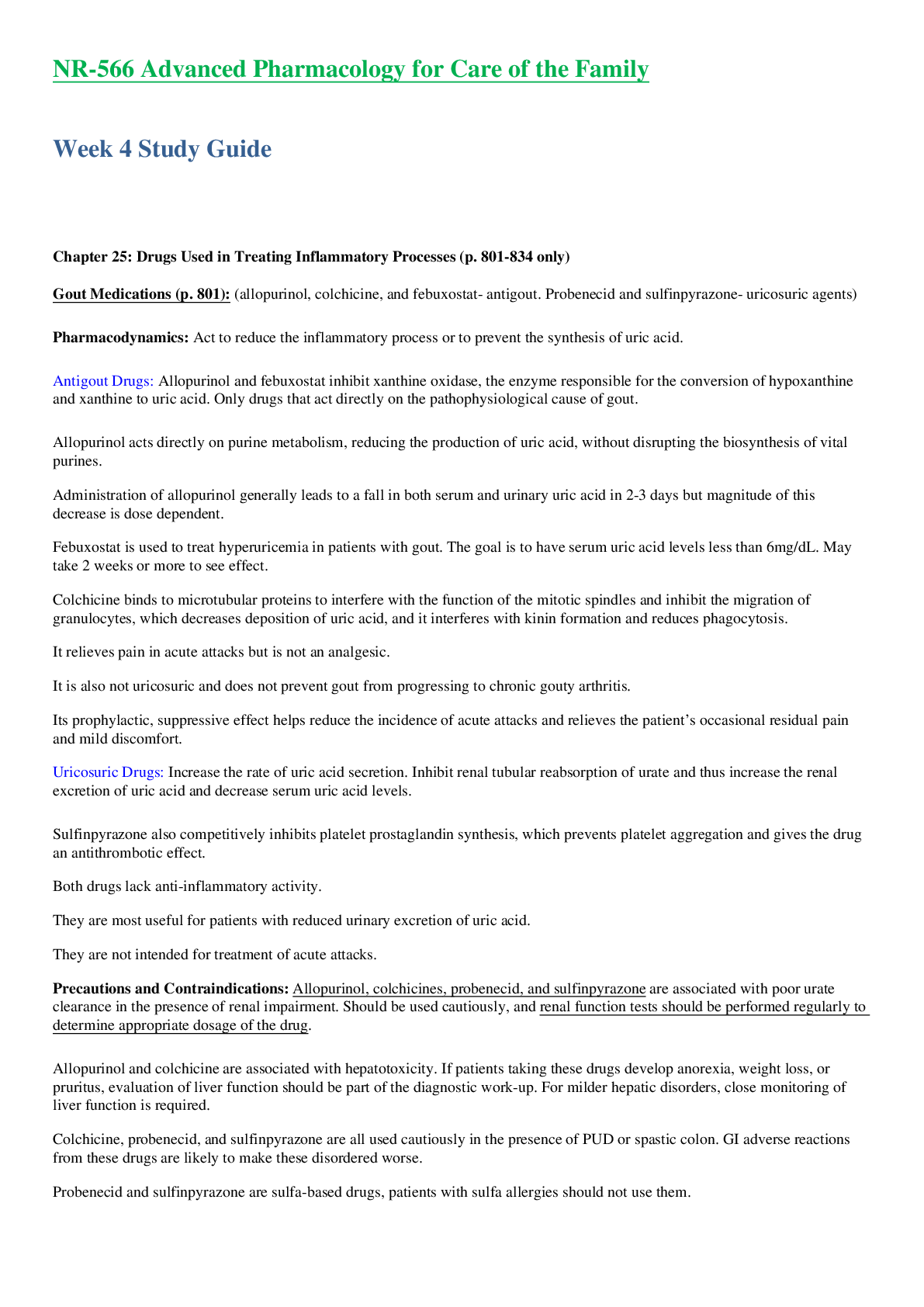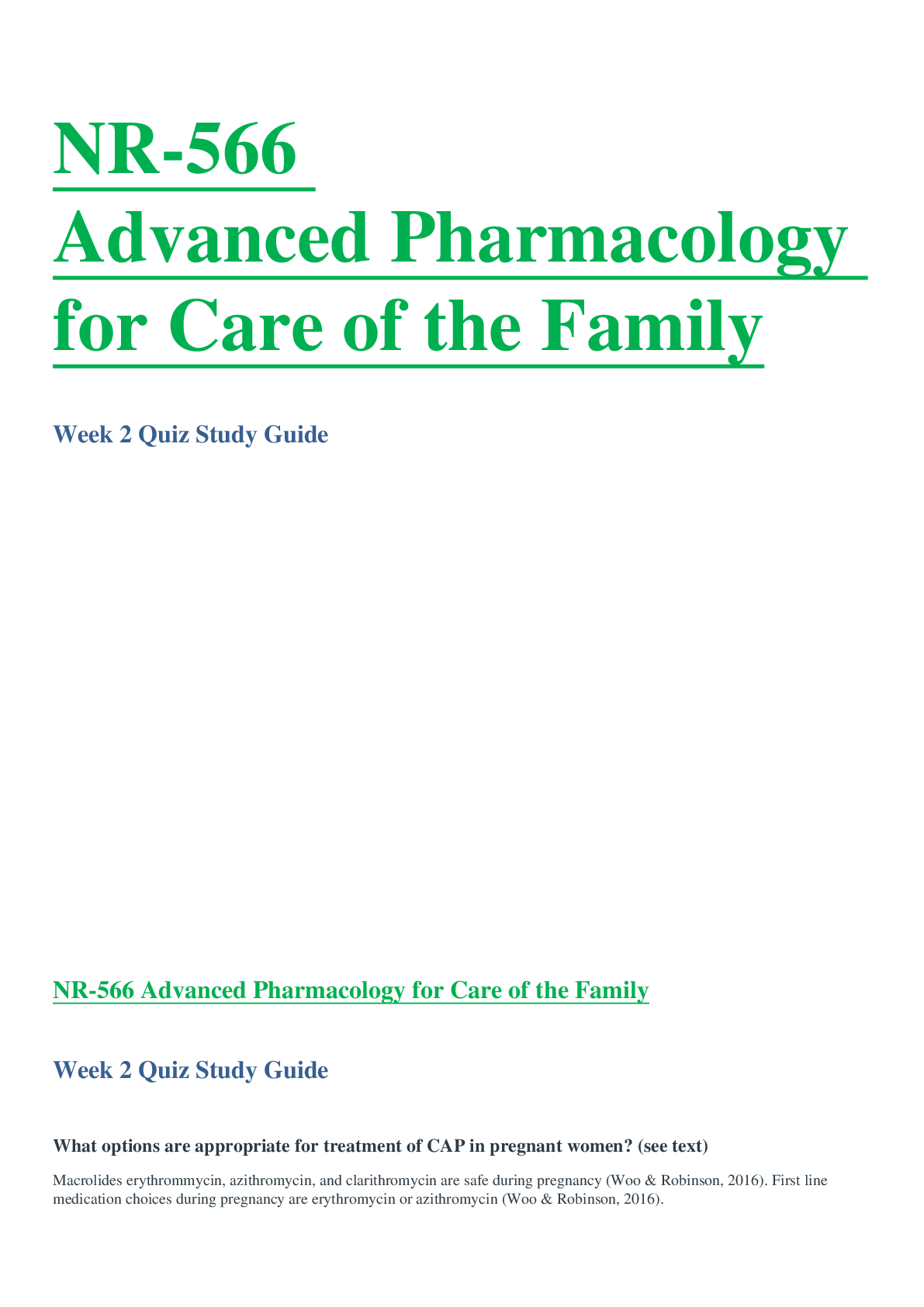*NURSING > EXAM REVIEW > NR 566 Midterm Exam Study Guide :Advanced Pharmacology for Care of the Family 2021/2022 (All)
NR 566 Midterm Exam Study Guide :Advanced Pharmacology for Care of the Family 2021/2022
Document Content and Description Below
NR 566 Midterm Exam Study Guide :Advanced Pharmacology for Care of the Family 2021/2022NR 566 Midterm Exam Study Guide :Advanced Pharmacology for Care of the Family 2021/2022NR 566 Midterm Exam Study ... Guide :Advanced Pharmacology for Care of the Family 2021/2022NR 566 Midterm Exam Study Guide :Advanced Pharmacology for Care of the Family 2021/2022NR 566 Midterm Exam Study Guide :Advanced Pharmacology for Care of the Family 2021/2022 Bactericidal agents: “BANG Q R.I.P” - Beta-lactams, Aminoglicosides, Nitroimidazoles (Metronidazole), Glycopeptides (Vancomycin), Quinolones, Rifampicin, Polymyxins (Colistin) ○ Bacteriostatic agents: “Ms. Colt” - Macrolides, Sulfonamides, Chloramphenicol, Oxazolidinones, Lincosamides (Clindamycin), Tetracyclines Bactericidal antibiotics kill bacteria directly, and bacteriostatic antibiotics stop/weaken bacteria from growing.to enable the immune system to take hold of infection -Things to know about each of the major antibiotic drug classes (MAKE FLASHCARDS) ● Aminoglycosides ● Cephalosporins ● Tetracyclines ● Penicillins ● Sulfonamides ● Fluoroquinolones ● Macrolides ● Carbapenems ● Lincosamides ● Glycopeptides o Examples o Contraindications and high-risk patients o Know examples of each of the major antibiotic drug classes. o Monitoring needs o Which ones require renal dosing adjustments and how much (i.e., 25%, 50%, etc.) o Patient education o Lifespan considerations including pregnancy o Indications for use Considerations: ● Renal/hepatic function: doses may need to be reduced. Consider creatinine clearance. ● Age: dose adjustments may be required for pediatric and geriatric patients- weightbased may be appropriate. ● Pregnancy and lactation: Be aware of teratogenic effects of certain classes of medications ● Recent antibiotic use: Be aware of possible drug-resistant bacteria ● Exposure history: travel, congregate care settings, close contacts ● Monitoring needs ○ Next, consider the syndrome, or presenting illness. -- What system is impacted? How aggressive is the infection? Consider non-bacterial causes of symptoms (i.e. viral, fungal, or non-infections) Carefully examine the clinical presentation of illness. ● Which ones require renal dosing adjustments and how much (i.e., 25%, 50%, etc.): VII. Precautions: Antibiotics A. Antibiotics that require NO [Show More]
Last updated: 1 year ago
Preview 1 out of 42 pages
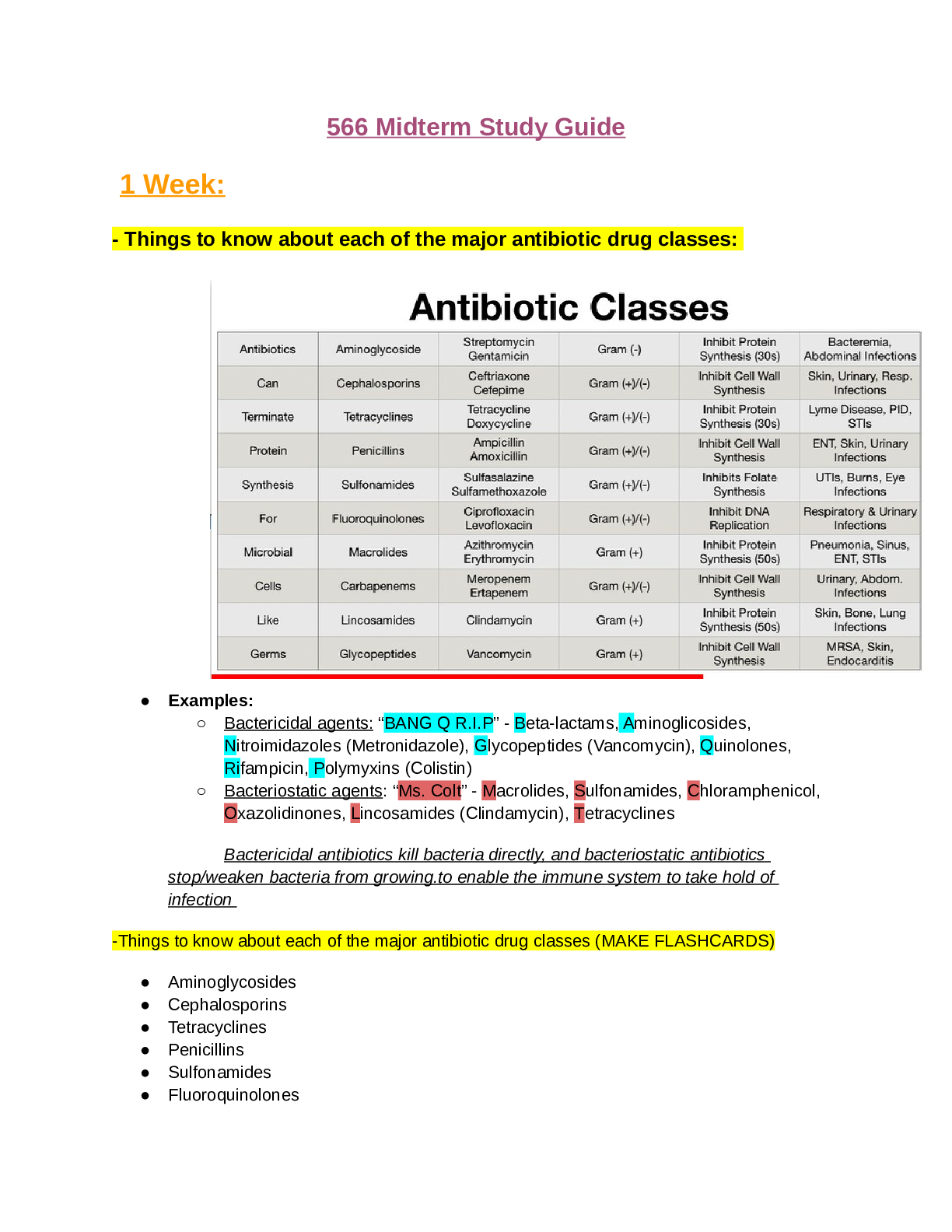
Reviews( 0 )
Document information
Connected school, study & course
About the document
Uploaded On
Nov 13, 2021
Number of pages
42
Written in
Additional information
This document has been written for:
Uploaded
Nov 13, 2021
Downloads
0
Views
44

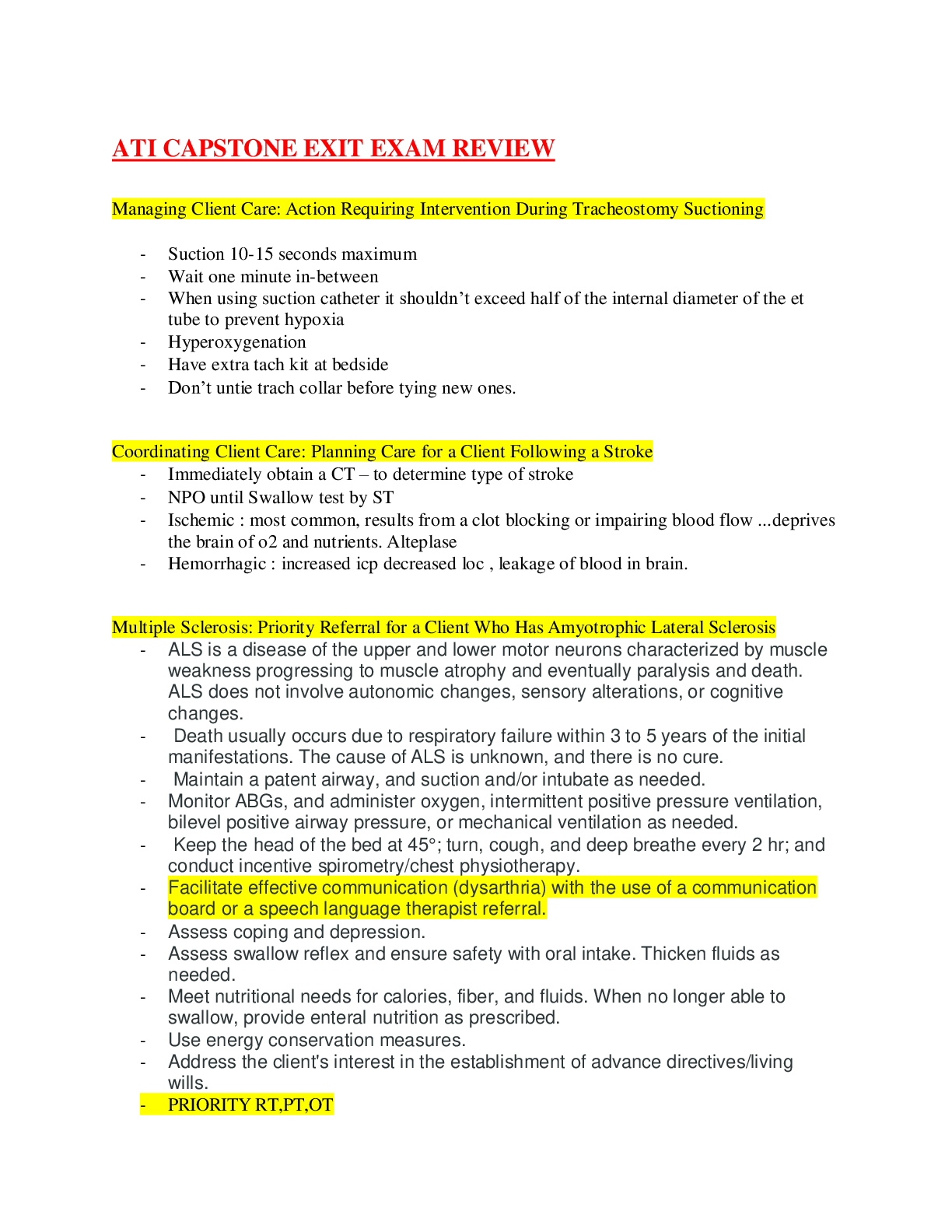
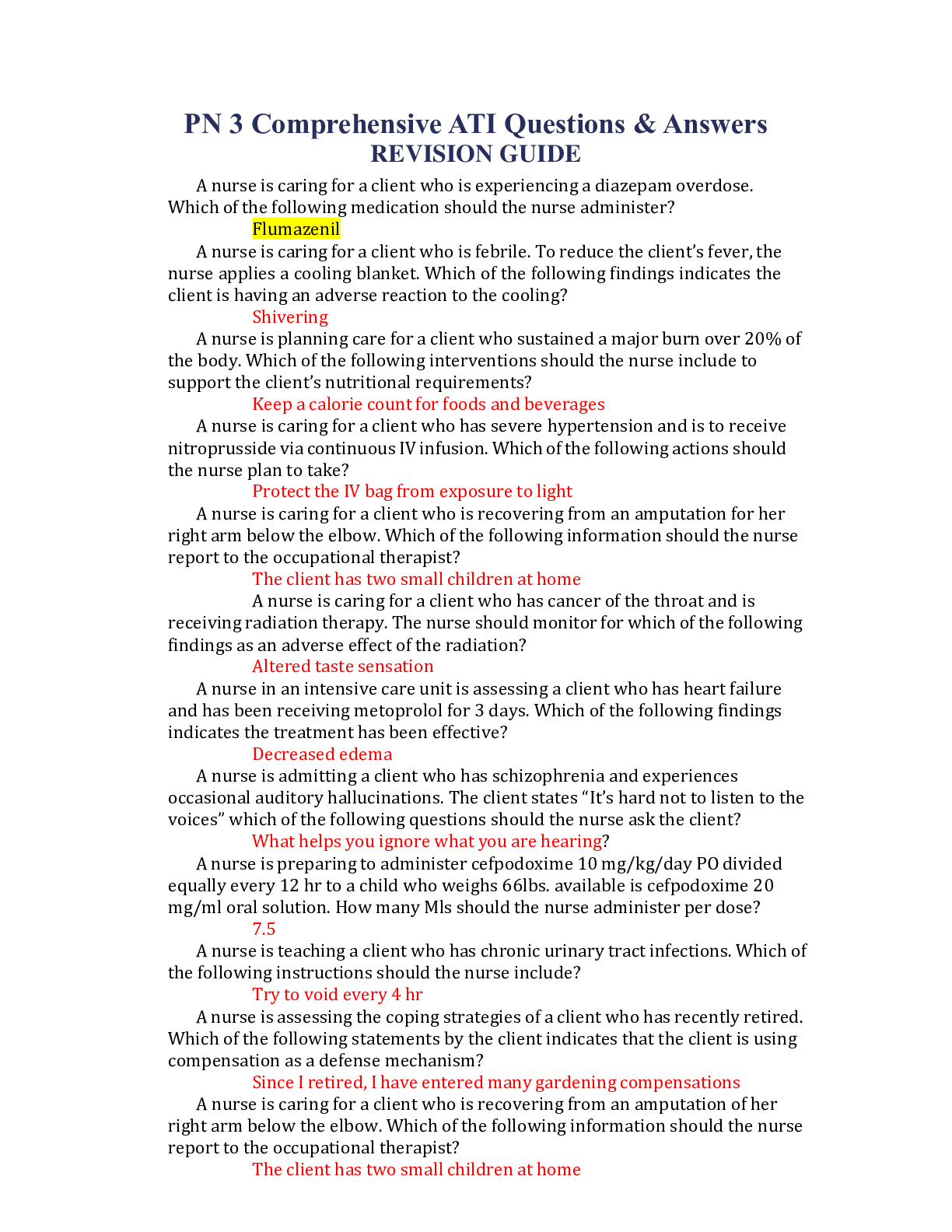
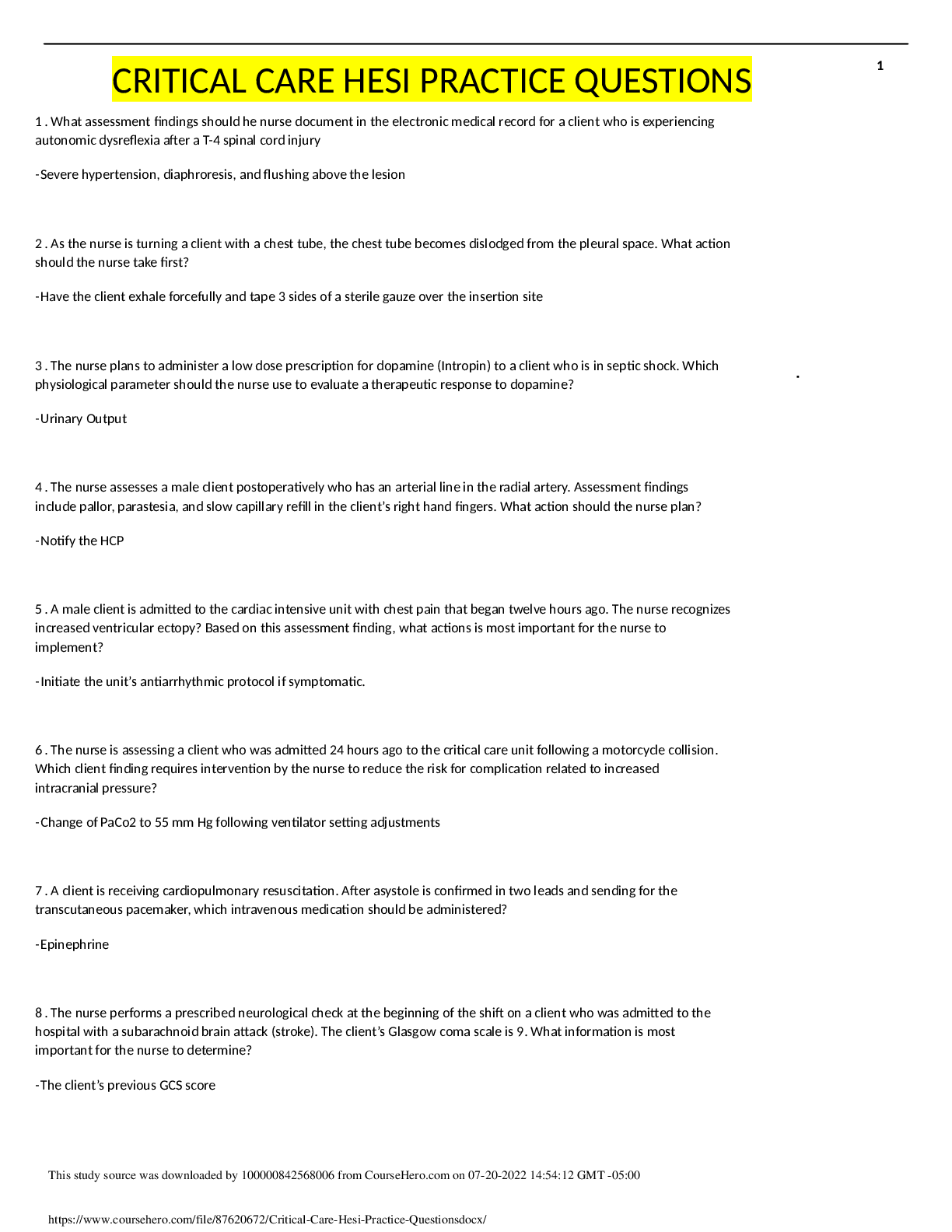

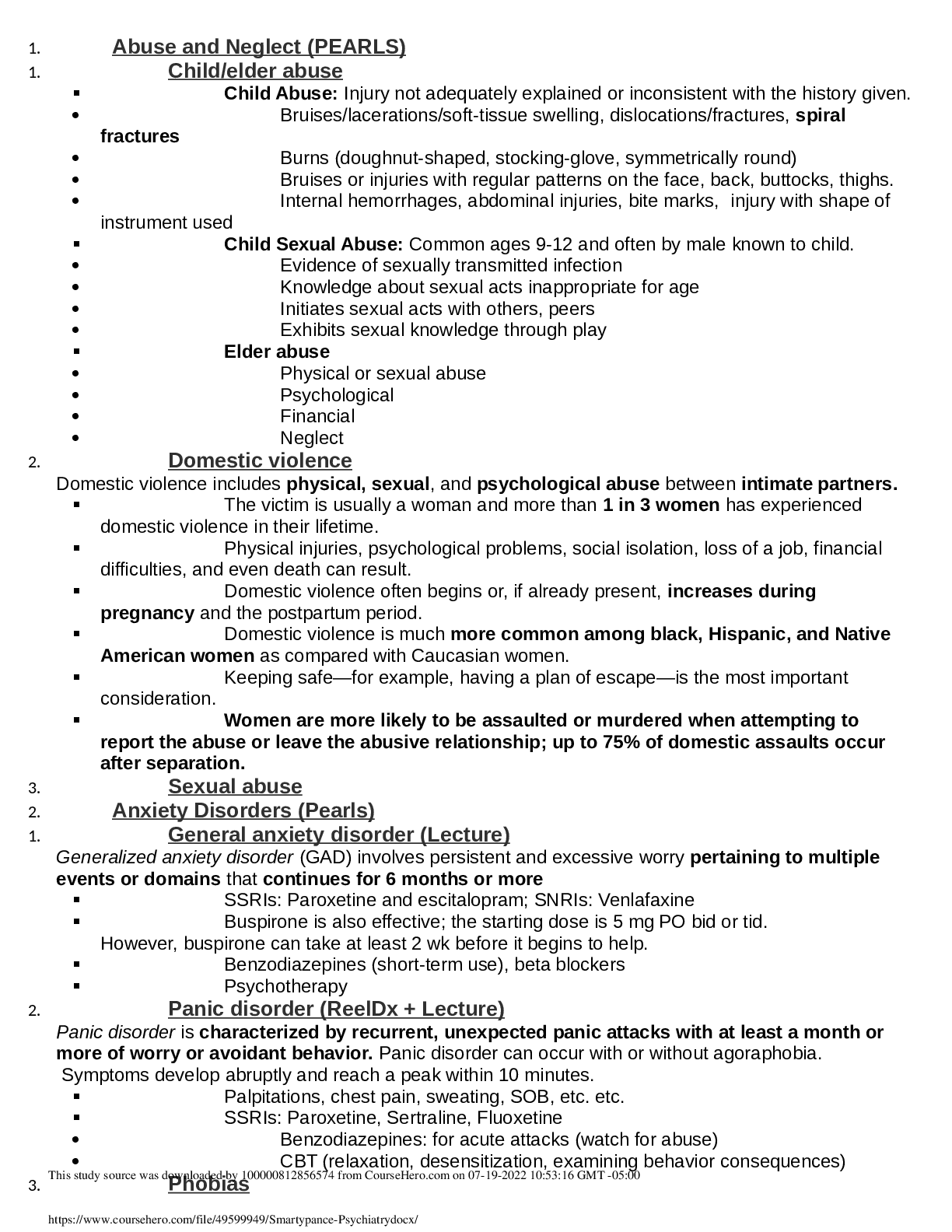
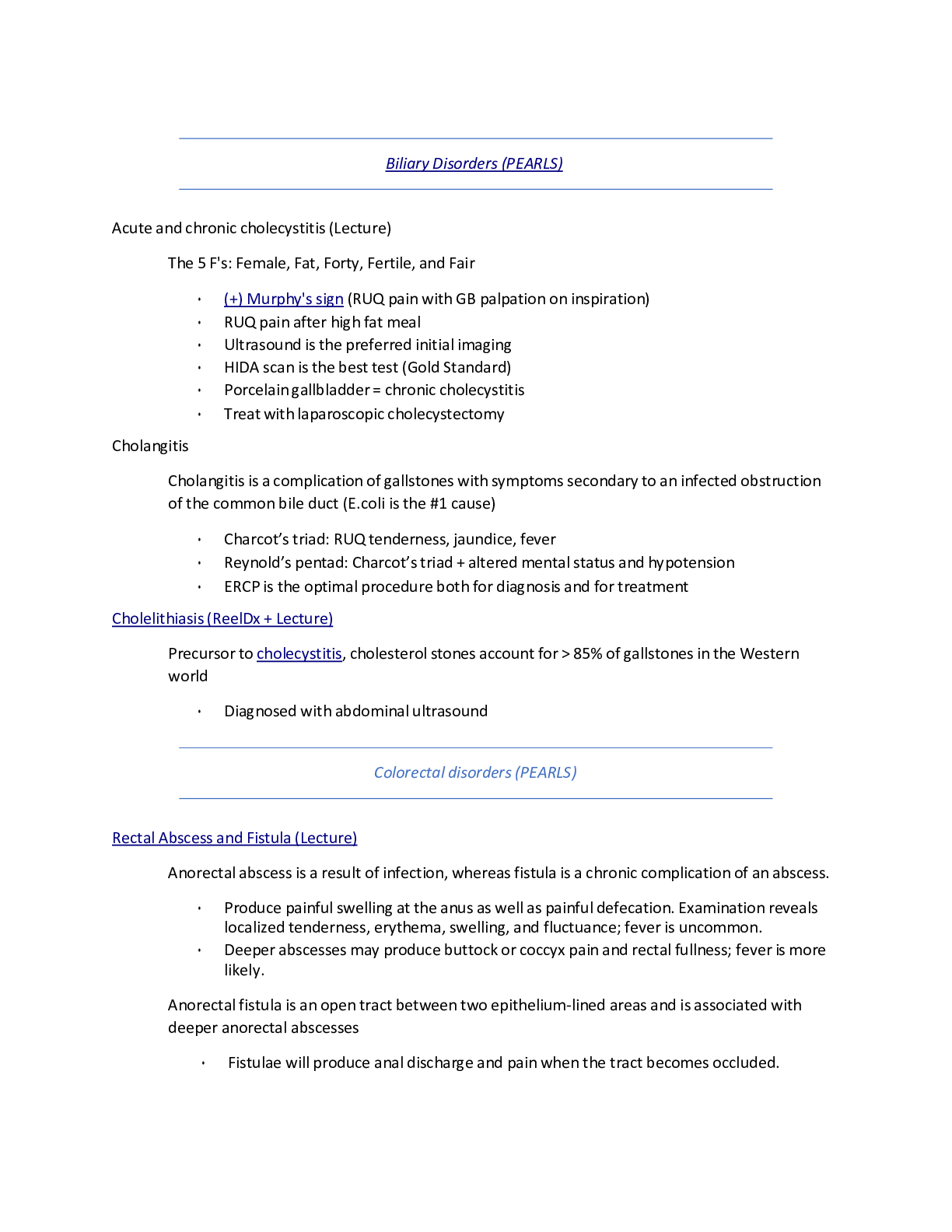
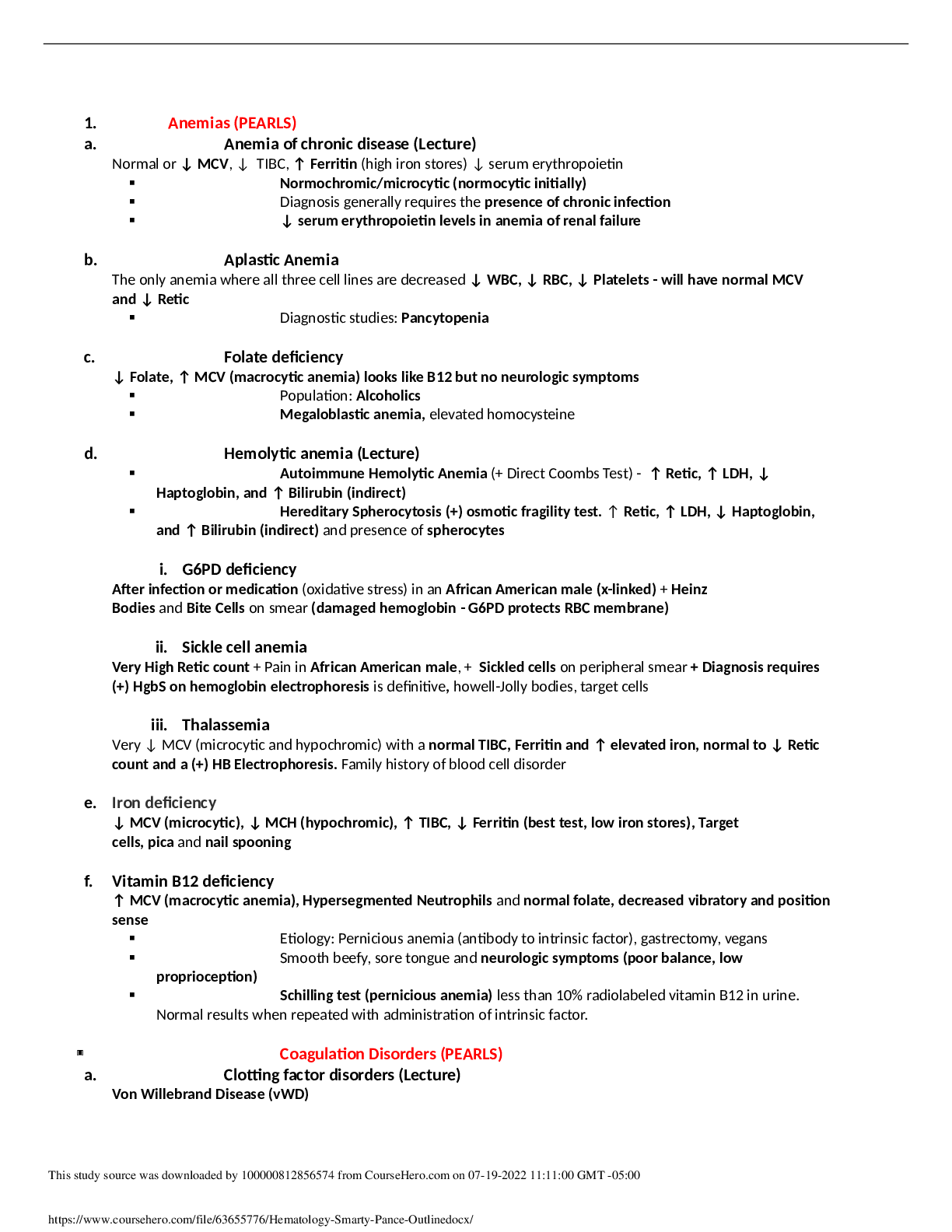
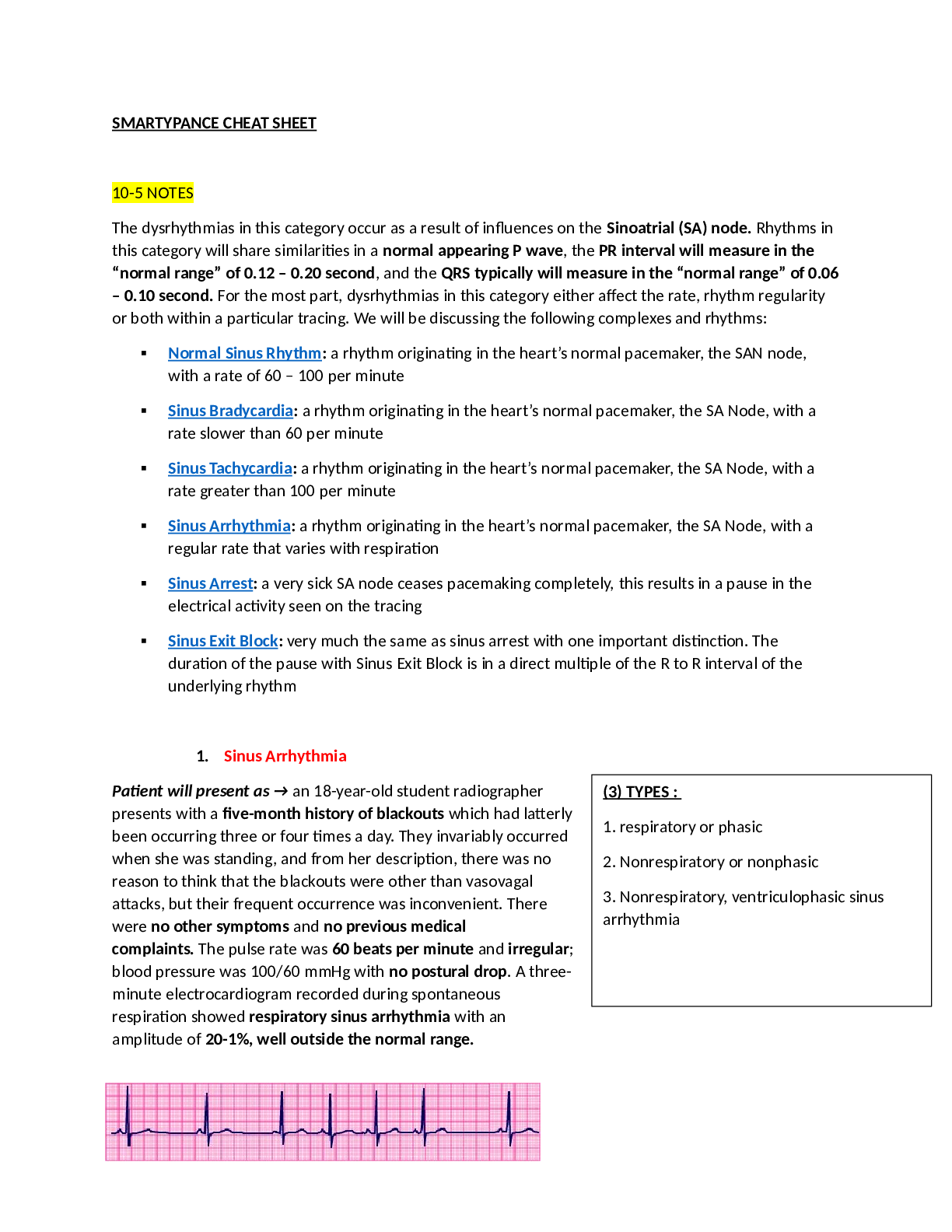


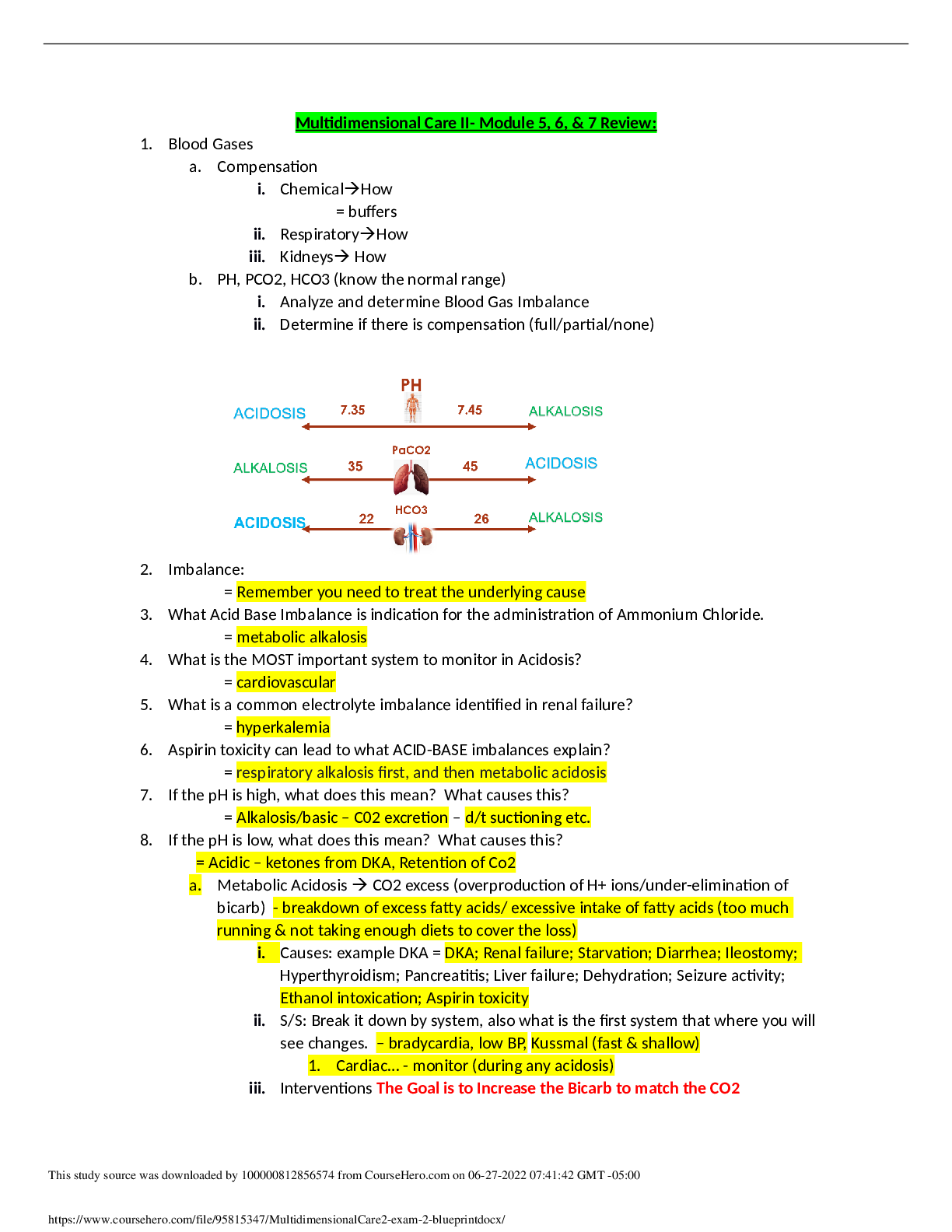
.png)
